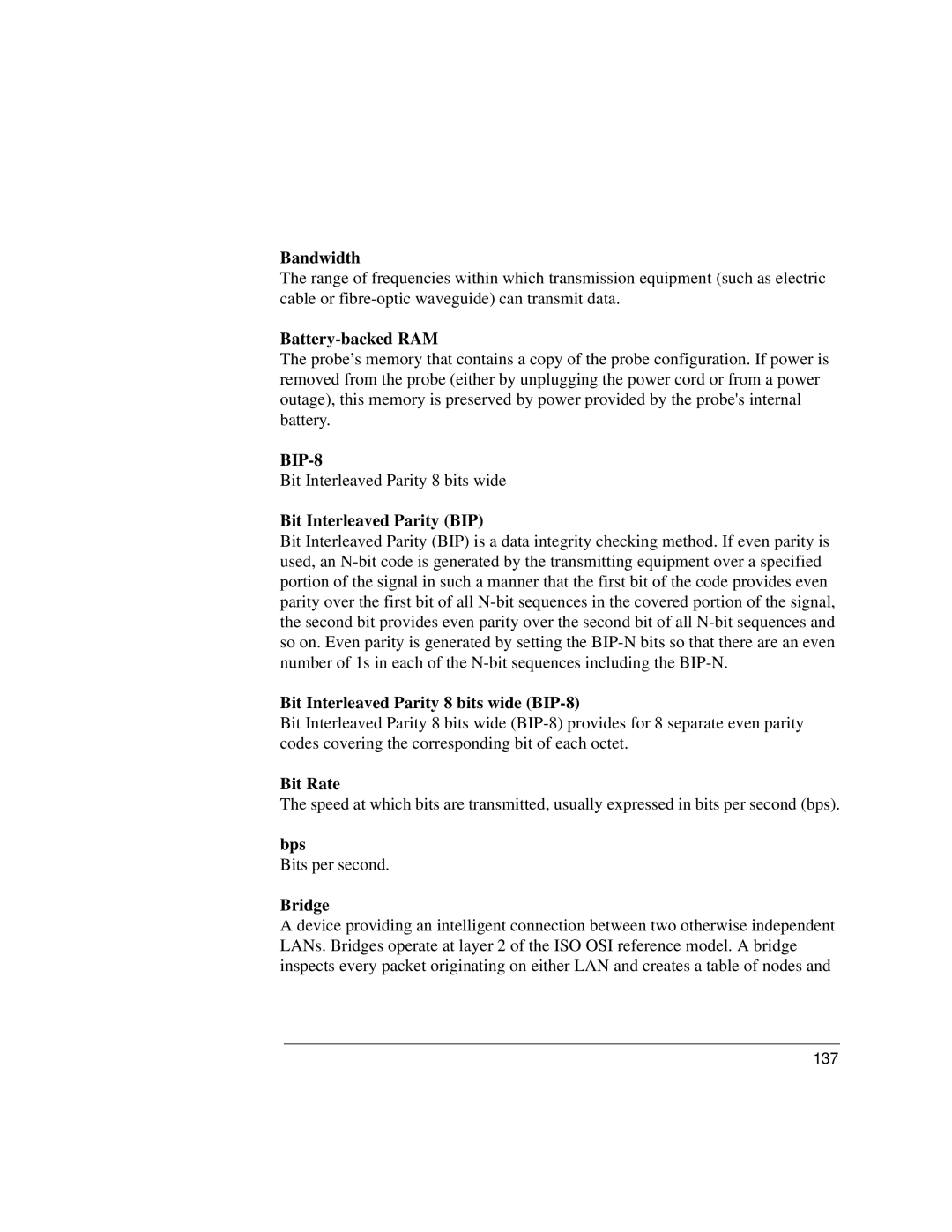Bandwidth
The range of frequencies within which transmission equipment (such as electric cable or
Battery-backed RAM
The probe’s memory that contains a copy of the probe configuration. If power is removed from the probe (either by unplugging the power cord or from a power outage), this memory is preserved by power provided by the probe's internal battery.
BIP-8
Bit Interleaved Parity 8 bits wide
Bit Interleaved Parity (BIP)
Bit Interleaved Parity (BIP) is a data integrity checking method. If even parity is used, an
Bit Interleaved Parity 8 bits wide (BIP-8)
Bit Interleaved Parity 8 bits wide
Bit Rate
The speed at which bits are transmitted, usually expressed in bits per second (bps).
bps
Bits per second.
Bridge
A device providing an intelligent connection between two otherwise independent LANs. Bridges operate at layer 2 of the ISO OSI reference model. A bridge inspects every packet originating on either LAN and creates a table of nodes and
137
